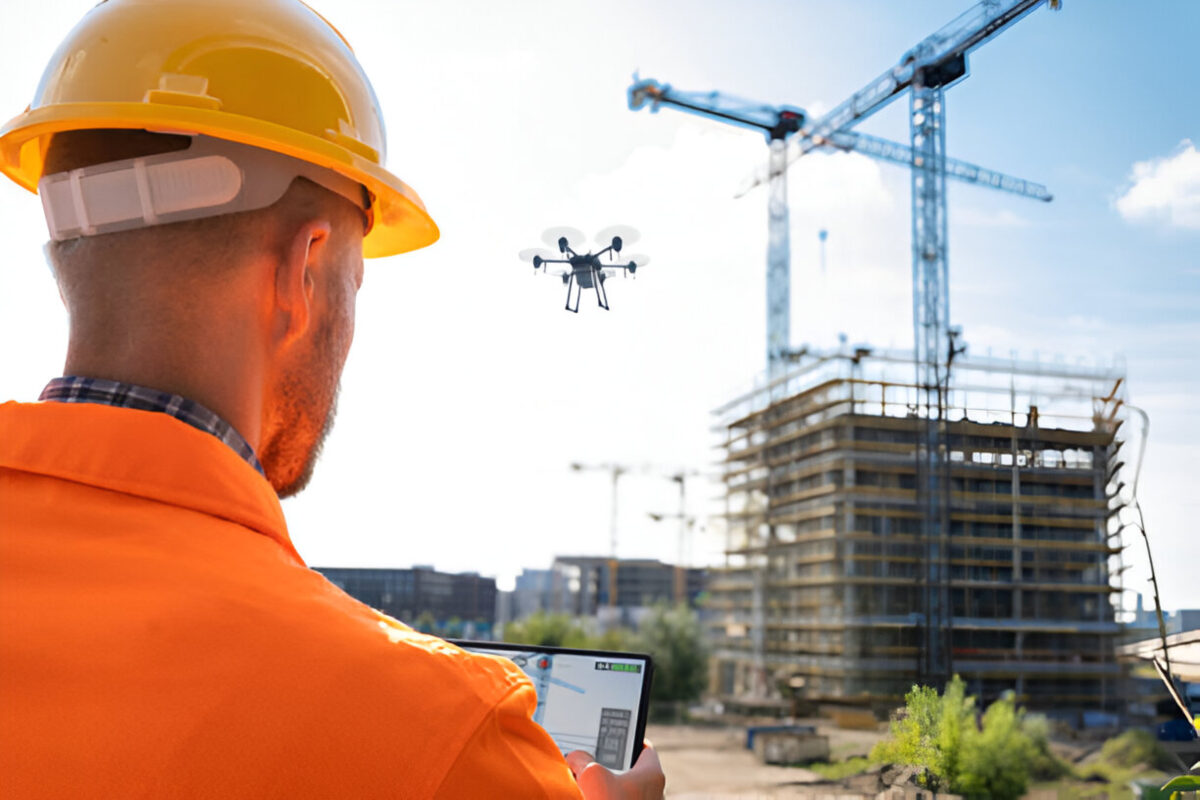The Use of Drone Survey and Mapping in Civil Engineering

Drones are revolutionizing the way civil engineering projects are surveyed and mapped. Through Drone Survey and Mapping, these unmanned aerial vehicles (UAVs) are equipped with advanced cameras and sensors, allowing them to capture high-resolution images and precise data in a fraction of the time that traditional surveying methods require.
1. Introduction to Drone Surveying in Civil Engineering
Drone surveys involve the use of UAVs to capture data over large areas. These drones can be used for land surveys, topographical mapping, construction site monitoring, and much more. The main advantage of drone technology is its ability to collect accurate data quickly, which can then be processed into 2D maps or 3D models. This efficiency is invaluable for civil engineers who need up-to-date information to make decisions during the planning and construction phases.
2. Key Benefits of Drone Surveying
a. Increased Efficiency and Speed
Traditional land surveying is time-consuming and labor-intensive, often taking days or weeks to complete for large areas. Drones, however, can cover vast tracts of land in a matter of hours, reducing project timelines significantly. This is particularly useful for large-scale civil engineering projects such as highways, bridges, and industrial sites.
b. Enhanced Accuracy
Drones equipped with GPS and RTK (Real-Time Kinematic) technology offer centimeter-level accuracy. RTK ensures the drone maintains constant communication with a base station, correcting its positional data in real-time. Alternatively, PPK (Post-Processing Kinematic) can be used, where the GPS data is corrected after the flight to ensure the highest accuracy. These technologies are essential for producing precise 3D models of construction sites and land.
c. Improved Safety
Surveying construction sites can often expose workers to hazardous conditions, especially in difficult-to-reach areas like cliffs, bridges, or areas near heavy machinery. With drones, surveyors can capture the data they need without entering dangerous zones, improving overall site safety.
3. Applications of Drones in Civil Engineering
a. Land Surveying and Topography
Drones are used to create highly detailed topographical maps of a project site. These maps help engineers understand the terrain and plan construction accordingly. Drones can survey areas that are otherwise inaccessible due to rough terrain or environmental conditions, making them a valuable tool for preliminary site assessments.
b. Construction Monitoring
Drones provide real-time monitoring of construction sites, allowing project managers to track progress efficiently. By capturing aerial views and comparing them with the project plan, engineers can spot discrepancies early on, avoiding costly delays.
c. Infrastructure Inspection
Civil engineers also use drones to inspect critical infrastructure such as bridges, dams, and tunnels. Drones can fly into confined spaces and reach areas that would otherwise require scaffolding or cranes. This reduces inspection times and costs, while also ensuring the structure’s safety and integrity.
4. Challenges and Limitations
While drones provide numerous advantages, there are still some challenges that need to be addressed. Signal disruptions, especially in areas with obstructions like tall buildings or mountainous regions, can interfere with real-time data collection. Regulations also restrict drone usage in certain areas, and licensed operators are required to ensure compliance with aviation laws.
5. The Future of Drones in Civil Engineering
As drone technology continues to evolve, we can expect even more integration into civil engineering projects. Advancements in AI and data processing will allow drones to autonomously survey and map large areas, further reducing costs and improving efficiency. In the near future, drones may also be equipped with more advanced sensors, allowing them to collect environmental data alongside geographical information, making them an essential tool for sustainable urban planning.
6. Dhaksha Drones: Leading the Way in Precision Surveying
Dhaksha Drones, one of India’s leading drone companies, is playing a pivotal role in transforming how drone technology is used for precision surveying. Their cutting-edge drones are designed to provide high accuracy and efficiency, making them a perfect solution for civil engineering applications. From land mapping to construction monitoring, Dhaksha Drones continues to push the boundaries of what’s possible with UAV technology, ensuring that projects are completed on time and within budget.
Conclusion
Drone survey and mapping are reshaping civil engineering, offering unprecedented efficiency, accuracy, and safety. As technology continues to advance, drones will become even more integral to the field, helping engineers complete projects faster, safer, and more cost-effectively. With companies like Dhaksha Drones leading the way, the future of drone surveying looks bright.
Also read – The Role of Agricultural Drones in Sustainable Farming





